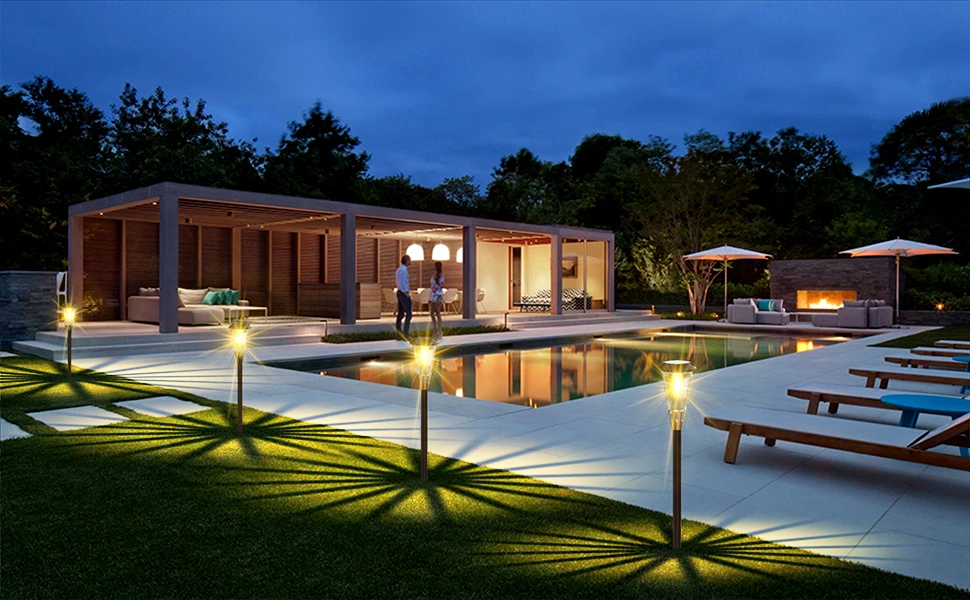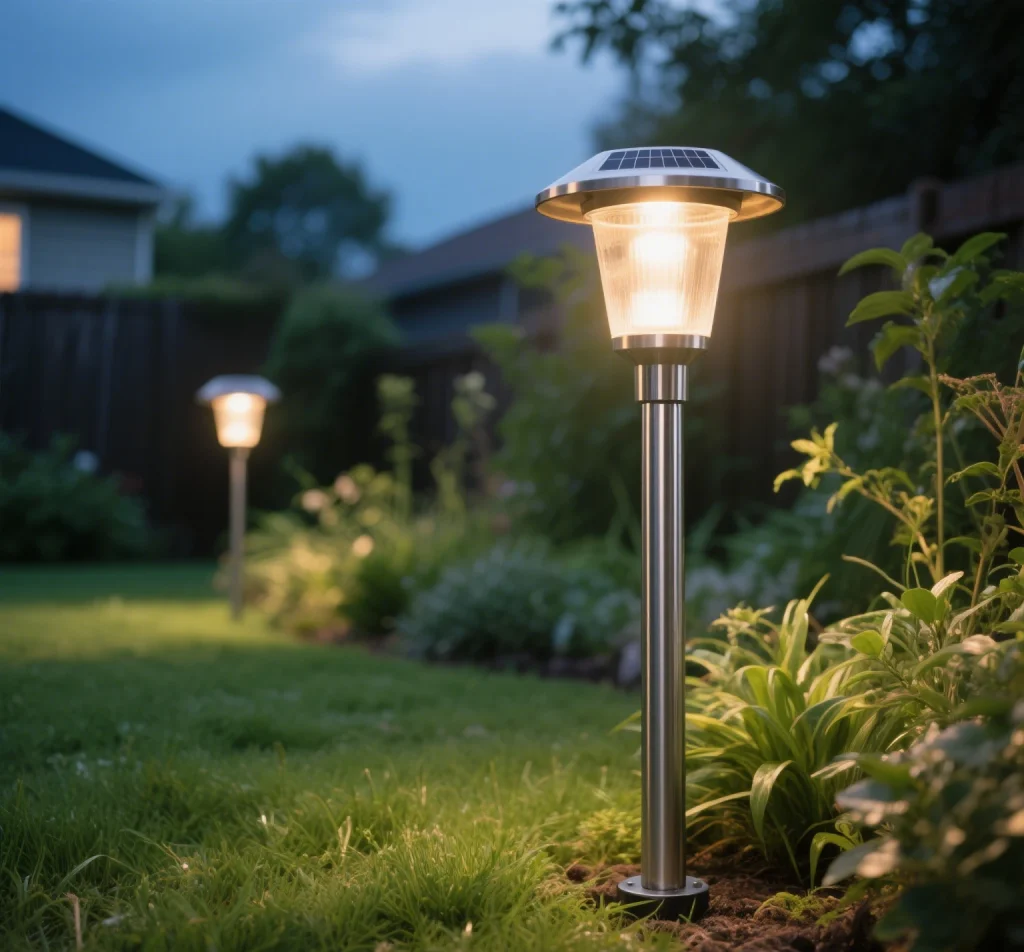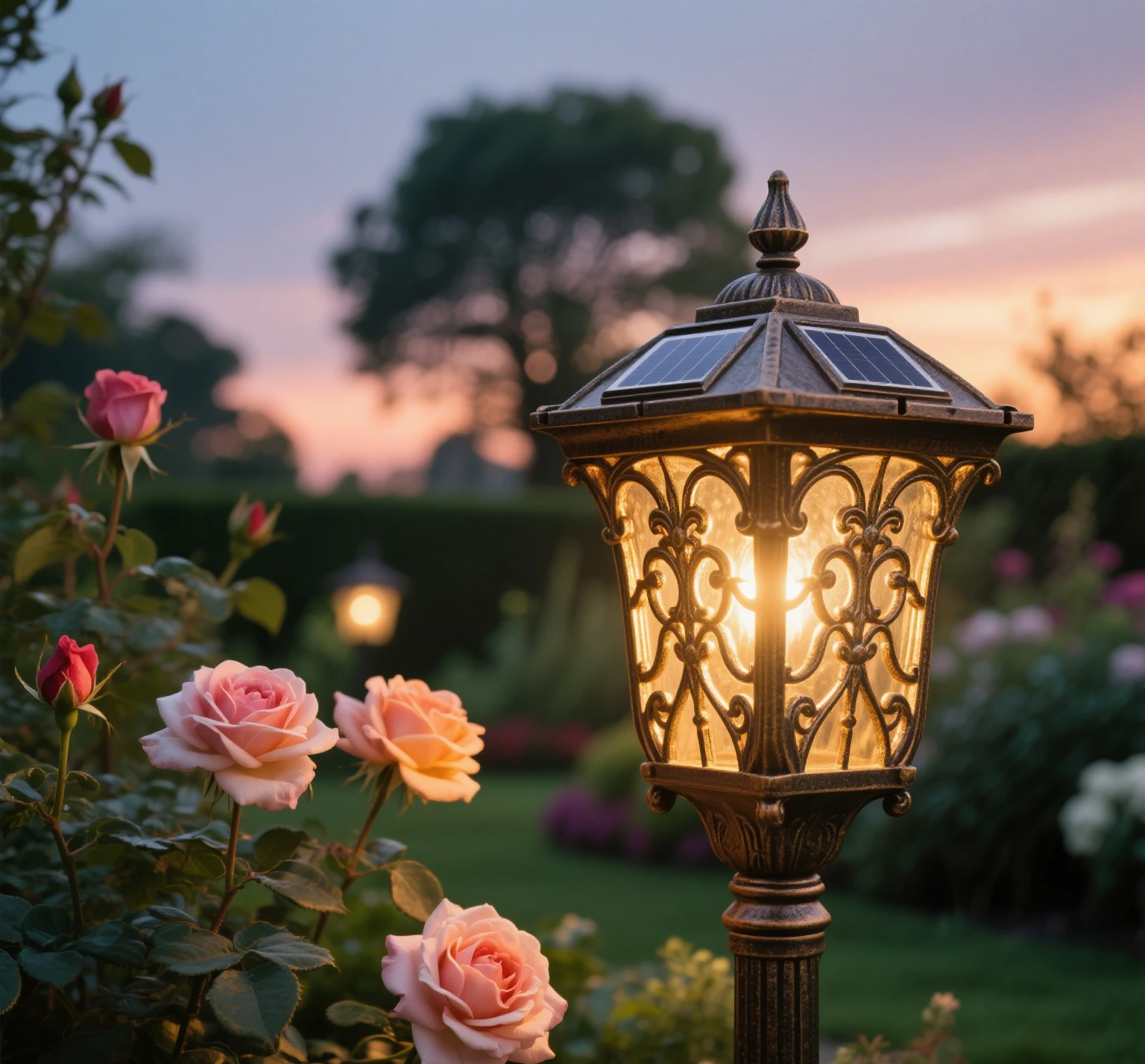Outdoor lighting enhances the aesthetics and safety of gardens, pathways, and courtyards, but the choice between solar garden lights and traditional electric lights significantly impacts long-term costs. This article compares the annual expenses of solar lighting versus traditional lighting, focusing on energy consumption, installation, maintenance, and return on investment (ROI). By analyzing real-world scenarios and incorporating practical insights, we aim to help you make an informed decision for your outdoor lighting needs.

Understanding the Basics of Garden Lighting
Before diving into the cost comparison, let’s examine the key components of solar garden lights and traditional electric lights:
- Solar Garden Lights: These use photovoltaic panels to convert sunlight into electricity, stored in a battery to power LED lights at night. They require no grid connection, making them eco-friendly and cost-efficient over time.
- Traditional Electric Lights: Powered by the electrical grid, these lights typically use incandescent, CFL, or LED bulbs and require wiring, transformers, and regular maintenance.
Both systems serve similar purposes, but their energy sources and operational costs differ significantly. Let’s break down the expenses.
Cost Analysis: Solar Garden Lights vs Traditional Lights
To provide a clear comparison, we’ll assume a typical setup of three garden lights, each with a power rating of 10W (total 30W), operating for 6 hours daily. We’ll use an average U.S. electricity rate of $0.15 per kWh for traditional lights and factor in installation and maintenance costs for both systems.
1. Energy Consumption Costs
Traditional Electric Lights
For three 10W lights running 6 hours daily:
- Daily energy consumption: 30W × 6 hours = 0.18 kWh
- Annual energy consumption: 0.18 kWh × 365 days = 65.7 kWh
- Annual electricity cost: 65.7 kWh × $0.15 = $9.86
If using less efficient incandescent bulbs (e.g., 30W per light), the total power becomes 90W, leading to:
- Annual consumption: 0.54 kWh/day × 365 = 197.1 kWh
- Annual cost: 197.1 kWh × $0.15 = $29.57
Solar Garden Lights
Solar garden lights operate on solar energy, eliminating electricity costs. The photovoltaic panel charges the battery during the day, powering the LED lights at night. Assuming proper placement in a sunny location (6–8 hours of direct sunlight), the annual electricity cost is $0.
2. Installation Costs
Traditional Electric Lights
Installing traditional lights involves:
- Wiring: Underground cables, conduits, and transformers, costing $100–$300 for a small garden setup.
- Labor: Professional electricians charge $50–$100 per hour, with installation taking 4–8 hours ($200–$800).
- Fixtures: Three 10W LED fixtures cost $30–$90 total.
Total installation cost: $330–$1,190, depending on complexity and labor rates. For a detailed breakdown, check our outdoor lighting installation guide.
Solar Garden Lights
Solar garden lights are simpler to install:
- No Wiring: Each unit is self-contained, requiring only mounting or staking.
- Fixtures: Three high-quality solar garden lights (10W LED with panel and battery) cost $60–$180 total.
- Labor: DIY installation is common, but professional setup may cost $50–$150 for three units.
Total installation cost: $60–$330. Learn more about solar light installation for tips on optimizing placement.

3. Maintenance Costs
Traditional Electric Lights
Maintenance for traditional lights includes:
- Bulb Replacement: LED bulbs last 15,000–25,000 hours, but incandescent bulbs (1,000 hours) may need replacing yearly, costing $5–$15 per bulb.
- Wiring Repairs: Exposure to weather can damage cables, with repairs costing $50–$200 annually.
- Cleaning: Minimal, but fixtures may need occasional cleaning ($10–$20/year).
Estimated annual maintenance: $15–$235. For cost-saving tips, see our lighting maintenance guide.
Solar Garden Lights
Solar lighting maintenance involves:
- Battery Replacement: Lithium-ion batteries last 2–3 years, costing $10–$30 per light for replacements ($30–$90 for three lights, spread over 3 years ≈ $10–$30/year).
- Panel Cleaning: Dust or debris on photovoltaic panels reduces efficiency. Cleaning every 3–6 months costs $0 (DIY) or $20–$50/year professionally.
- LED Replacement: LEDs last 25,000+ hours, requiring rare replacements (under $5/year).
Estimated annual maintenance: $15–$80. Explore solar maintenance tips for longevity.
4. Total Annual Costs
Traditional Electric Lights
- Electricity: $9.86–$29.57 (LED vs incandescent)
- Maintenance: $15–$235
- Total annual cost: $24.86–$264.57
Initial installation ($330–$1,190) is a one-time cost but impacts ROI calculations.
Solar Garden Lights
- Electricity: $0
- Maintenance: $15–$80
- Total annual cost: $15–$80
Initial installation ($60–$330) is lower, and zero electricity costs make solar lighting more economical over time.
Return on Investment (ROI) for Solar Garden Lights
To calculate ROI, consider the initial cost difference and annual savings:
- Cost Difference: Solar installation ($60–$330) vs traditional ($330–$1,190). Assuming mid-range costs ($195 for solar, $760 for traditional), the difference is $565.
- Annual Savings: Traditional costs ($24.86–$264.57) minus solar costs ($15–$80) = $9.86–$184.57 savings per year.
- Payback Period: $565 ÷ $184.57 (high-end savings) = ~3 years; $565 ÷ $9.86 (low-end savings) = ~57 years. On average, payback occurs in 1–3 years for most setups.
After the payback period, solar garden lights save $9.86–$184.57 annually compared to traditional lights. For a deeper ROI analysis, visit our solar investment calculator.
Additional Benefits of Solar Garden Lights
Beyond cost savings, solar lighting offers unique advantages:
- Eco-Friendly: Reduces carbon footprint by using renewable solar energy.
- Easy Installation: No need for electrical permits or trenching, ideal for remote areas.
- Reliability: Modern solar garden lights include advanced controllers and photosensors for consistent performance.
- Flexibility: Easily repositioned without rewiring, perfect for changing garden layouts.
For more on environmental benefits, check our solar energy advantages guide.
Considerations for Choosing Between Solar and Traditional Lights
While solar garden lights are cost-effective, certain scenarios favor traditional lights:
- High Light Demand: Areas requiring bright, continuous lighting may need grid-powered systems.
- Shaded Locations: Photovoltaic panels need ample sunlight; heavily shaded yards reduce solar efficiency.
- Upfront Budget: Traditional lights may have lower initial costs for basic setups.
Evaluate your needs using our lighting selection tool to find the best fit.
Practical Tips for Maximizing Solar Garden Light Savings
To ensure solar lighting delivers optimal value:
- Optimize Panel Placement: Position photovoltaic panels in unshaded areas, angled for maximum sunlight (e.g., 30–45° in most regions).
- Choose Efficient LEDs: Select LED lights with high lumens per watt (e.g., 100 lm/W) for brighter output with less power.
- Maintain Batteries: Avoid deep discharges and replace batteries every 2–3 years to maintain performance.
- Use Motion Sensors: Install solar garden lights with motion sensors to reduce battery drain, extending runtime.
For installation tips, see our solar light setup guide.
Conclusion
Solar garden lights offer significant savings over traditional electric lights, with zero electricity costs and lower maintenance expenses. For a typical setup of three 10W lights, traditional lighting costs $24.86–$264.57 annually, while solar lighting costs $15–$80, with a payback period of 1–3 years. Beyond economics, solar energy provides environmental benefits and installation flexibility, making it ideal for modern gardens. By choosing high-quality solar garden lights and maintaining them properly, you can enjoy reliable, cost-free illumination for years.
For further insights, explore our solar lighting resources or contact our team for personalized advice on optimizing your outdoor lighting setup.


Leave a Reply